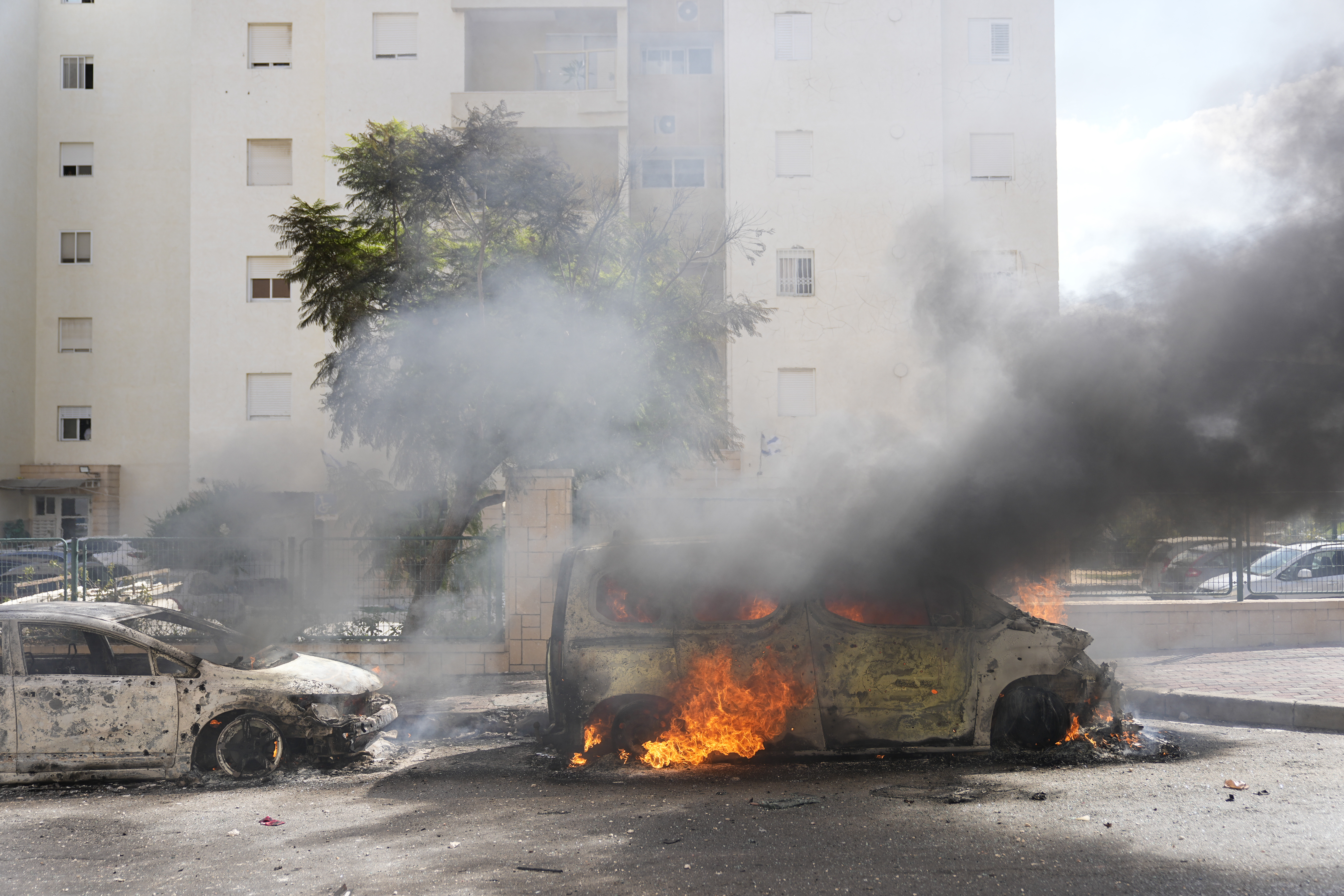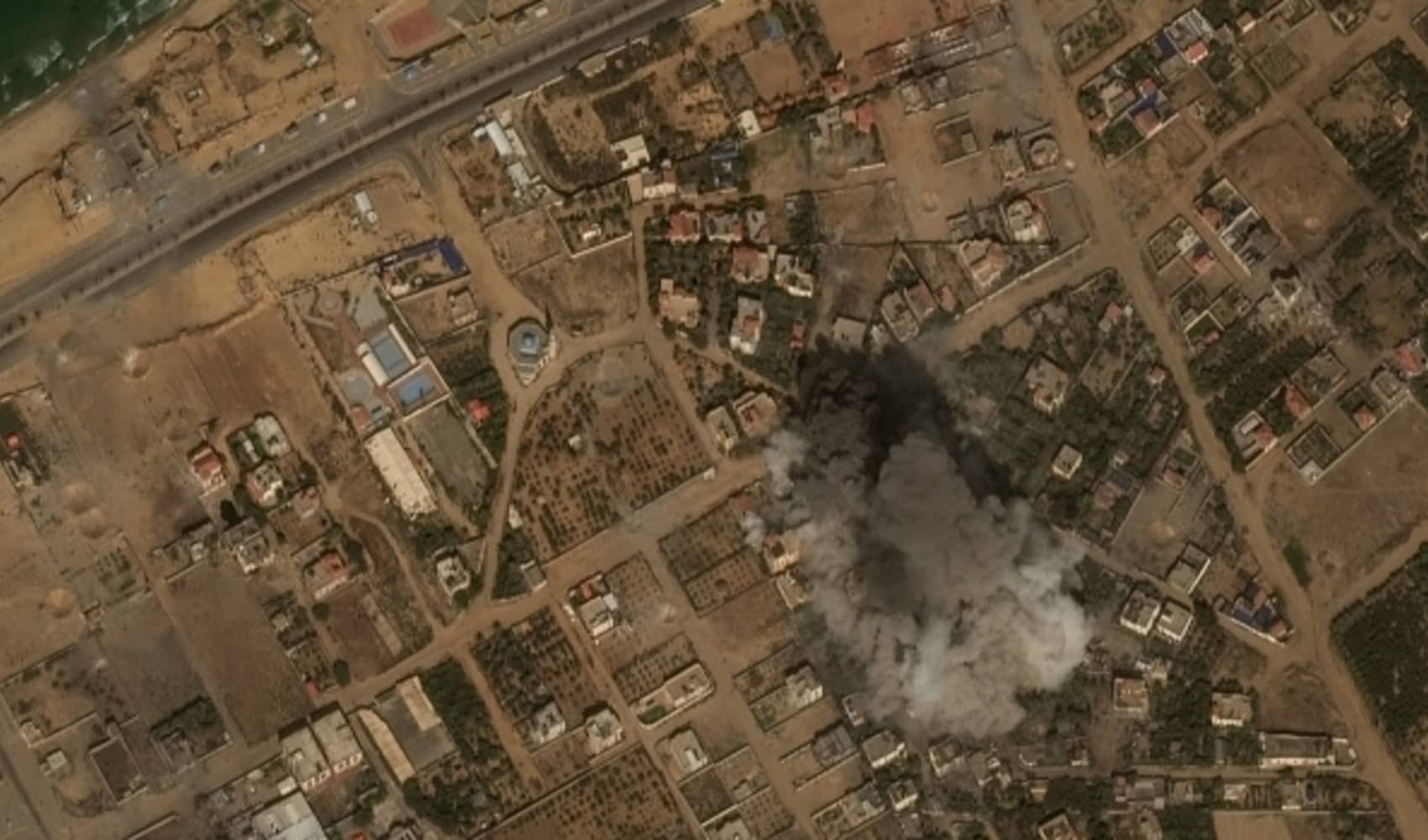Hamas, which has ruled the Gaza Strip since 2007, launched an attack inside Israel over the weekend, killing hundreds and taking others hostage.
Its unprecedented breach of the border sent terrorists inside border communities and military installations, shocked Israel and its allies, and raised questions about the group’s capabilities and strategy.
What is Hamas?
The group was founded in 1987 by Sheikh Ahmed Yassin, a Palestinian refugee living in Gaza, during the first intifada, or uprising, which was marked by widespread protests against Israel’s occupation of three territories that Palestinians want to form their future state: Gaza, the West Bank and east Jerusalem.
Feeling out of the loop? We'll catch you up on the Chicago news you need to know. Sign up for the weekly Chicago Catch-Up newsletter here.
Hamas is the Arabic acronym for the Islamic Resistance Movement, and a recognition of the group’s roots and early ties to one of the Sunni world’s most prominent groups, the Muslim Brotherhood, founded in Egypt in the 1920s.
The group has vowed to annihilate Israel and has been responsible for many suicide bombings and other deadly attacks on civilians and Israeli soldiers.
The U.S. State Department designated Hamas a terrorist group in 1997. The European Union and other Western countries also consider it a terrorist organization.
Hamas won 2006 parliamentary elections elections and in 2007 violently seized control of the Gaza Strip from the internationally recognized Palestinian Authority. The Palestinian Authority, dominated by rival Fatah movement, administers semi-autonomous areas of the Israeli-occupied West Bank.
Israel responded to the Hamas takeover with a blockade on Gaza, restricting movement of people and goods in and out of the territory in a step it says is needed to keep the group from developing weapons. The blockade has ravaged Gaza's economy, and Palestinians accuse Israel of collective punishment.
Who are Hamas' leaders?
Over the years, Hamas received backing from Arab countries, such as Qatar and Turkey. Recently, it's moved closer to Iran and its allies.
Hamas founder and spiritual leader Yassin — a paralyzed man who used a wheelchair — spent years in Israeli prisons and oversaw the establishment of Hamas' military wing, which carried out its first suicide attack in 1993.
Israeli forces have targeted Hamas leaders throughout the years, killing Yassin in 2004.
Khaled Mashaal, an exiled Hamas member who survived an earlier Israeli assassination attempt, became the group’s leader soon after.
Yehia Sinwar, in Gaza, and Ismail Haniyeh, who lives in exile, are Hamas' current leaders. They realigned the group’s leadership with Iran and its allies, including Lebanon's Hezbollah. Since then, many of the group’s leaders relocated to Beirut.
What does Hamas want?
Hamas has always espoused violence as a means to liberate occupied Palestinian territories and has called for the annihilation of Israel.
Hamas has carried out suicide bombings and over the years fired tens of thousands of increasingly powerful rockets from Gaza into Israel. It also established a network of tunnels running from Gaza to Egypt to smuggle in weapons, as well as attack tunnels burrowing into Israel.
This is the fifth round of major conflict between Israel and Hamas since 2008, with the tiny enclave's more than 2 million Palestinian residents bearing the brunt of the deaths and the destruction.
In recent years, Hamas had appeared to be more focused on running Gaza than attacking Israel.
Why did Hamas attack Israel now?
Hamas officials cited long-simmering tensions, including a dispute over the sensitive Al-Aqsa Mosque sacred to both Muslims and Jews. Competing claims over the site, known to Jews as the Temple Mount, have spilled into violence before, including a bloody 11-day war between Israel and Hamas in 2021.
In recent years, Israeli religious nationalists — such as Itamar Ben-Gvir, the national security minister — have increased their visits to the compound. Last week, during the Jewish harvest festival of Sukkot, hundreds of ultra-Orthodox Jews and Israeli activists visited the site, prompting condemnation from Hamas and accusations that Jews were praying there in violation of the status quo agreement.
Hamas also has cited the expansion of Jewish settlements — which the international community considers to be illegal — on lands Palestinians claim for a future state, Ben-Gvir’s efforts to toughen restrictions on Palestinian prisoners in Israel and its ongoing blockade of Gaza pushed it to attack.
Meanwhile, neighboring Arab countries that have long long rejected the existence of Israel since its 1948 founding in lands long inhabited by Palestinians have made peace deals with Israel without having to make concessions in its conflict with the Palestinians.
Under former President Donald Trump, the United Arab Emirates, Bahrain and Morocco all signed on to normalization agreements with Israel. Secretary of State Antony Blinken said the Hamas attacks may have been driven in part by a desire to scuttle the United States' most ambitious part of the initiative: the sealing of diplomatic relations between rivals Israel and Saudi Arabia. The Middle East's two greatest powers share a common enemy in Iran, a generous military and financial sponsor of Hamas.
What is Palestine?
Until 1948, Palestine typically referred to the geographic region located between the Mediterranean Sea and the Jordan River. Arab people who call this territory home are known as Palestinians since the early 20th century. After the Ottoman Empire was defeated in World War I, the British took control of the area. The land was inhabited by a Jewish minority and Arab majority.
Much of this land is now considered present-day Israel. That's because in 1947, after more than two decades of British rule, the United Nations proposed a plan to partition Palestine into two sections: an independent Jewish state and an independent Arab state.
The city of Jerusalem, which was claimed as a capital by both Jews and Palestinians, was to be an international territory with a special status.
What started the Israel-Palestinian conflict?
Jewish leaders accepted the two-state plan, but many Palestinians — some of whom had been fighting British interests in the region for decades — opposed it and it was never implemented.
The British withdrew from Palestine in 1948 and Israel declared itself an independent state. Palestinians objected and neighboring Arab countries mobilized to prevent the formation of the Israeli state, sparking the 1948 Arab-Israeli War. By the time the fighting ended a year later, Israel controlled most of the territory under former British Mandate, including a large part of Jerusalem, while Jordan took control of the West Bank and Egypt occupied Gaza. Over half of the Palestinian Arab population fled or were expelled, according to the UN.
Without an agreement, wars and conflicts continued. In 1967, during what became known as the Six-Day War, Israel seized the Gaza Strip and the Sinai Peninsula from Egypt, the Golan Heights from Syria, and the West Bank and east Jerusalem from Jordan, citing Arab aggression at its borders. Israel offered to return the territories in exchange for Arab recognition of the right of Israel to exist and guarantees against future attacks. Arab leaders at the time declined a peace agreement, however, Egypt would eventually negotiate the return of the Sinai Peninsula in exchange for full diplomatic recognition of Israel.
Israel’s continued occupation of the seized territories and its ruling over millions of Palestinians have sparked decades of conflict and violence. And while the mainstream Palestinian leadership still says it wants a peace deal that includes a two-state solution, Jews continue to build settlements in the occupied lands in a way that makes a future partition difficult, perhaps impossible. And neither side is willing to compromise on terms.
Photos: Israel-Hamas War
What is Israel's Iron Dome system and how does it work?
The Iron Dome is part of Israel’s multilayered aerial defense system, ranging from systems capable of intercepting rockets fired from short range up to striking long-range missiles outside of the atmosphere.
Iron Dome uses radar, advanced tracking technology and anti-missile batteries to follow the trajectory of an incoming rocket or mortar and determine if it is headed for a major population center. If an urban area is threatened, interceptors are fired to detonate in the air in close proximity to the missile. Projectiles not posing a threat are allowed to fall in empty fields. The system targets short-range rockets with a range between 2 miles and 45 miles; interceptors cost as much $100,000 a piece. It was upgraded in 2021 to cope with an additional array of aerial threats.
Created by Israel’s Rafael Advanced Defense Systems, Iron Dome has shot down thousands of incoming projectiles fired from the Gaza Strip since it was deployed a decade ago.
As of March 2023, the U.S. has provided nearly $3 billion to help Israel cover costs for batteries, interceptors, production costs and maintenance, according to a Congressional Research Service report.
Why did the attack take Israel by surprise?
Israel’s eyes appeared to have been closed in the lead-up to the attack by Hamas, which broke down Israeli border barriers and sent hundreds of militants into Israel to carry out a brazen attack that has killed hundreds.
Israel’s intelligence agencies have gained an aura of invincibility over the decades because of a string of achievements. Israel has foiled plots seeded in the West Bank, allegedly hunted down Hamas operatives in Dubai and has been accused of killing Iranian nuclear scientists in the heart of Iran. Even when their efforts have stumbled, agencies like the Mossad, Shin Bet and military intelligence have maintained their mystique.
But the weekend’s assault, which caught Israel off guard on a major Jewish holiday, plunges that reputation into doubt and raises questions about the country’s readiness in the face of a weaker but determined foe. Four days later, Hamas militants continued to battle Israeli forces inside Israeli territory, and dozens of Israelis were in Hamas captivity in Gaza.
Some say it is too early to pin the blame solely on an intelligence fault. They point to a wave of low-level violence in the West Bank that shifted some military resources there and the political chaos roiling Israel over steps by Netanyahu’s far-right government to overhaul the judiciary. The controversial plan has threatened the cohesion of the country’s powerful military.
Israel withdrew troops and settlers from the Gaza Strip in 2005, stripping it of a close handle on the happenings in the territory. But even after Hamas overran Gaza in 2007, Israel appeared to maintain its edge, using technological and human intelligence.
It claimed to know the precise locations of Hamas leadership and appeared to prove it through the assassinations of militant leaders in surgical strikes, sometimes while they slept in their bedrooms. Israel has known where to strike underground tunnels used by Hamas to ferry around fighters and arms, destroying miles (kilometers) of the concealed passageways.
Despite those abilities, Hamas was able to keep its plan under wraps. The ferocious attack, which likely took months of planning and meticulous training and involved coordination among multiple militant groups, appeared to have gone under Israel's intelligence radar.
Amir Avivi, a retired Israeli general, said that without a foothold inside Gaza, Israel's security services have come to rely increasingly on technological means to gain intelligence. He said militants in Gaza have found ways to evade that technological intelligence gathering, giving Israel an incomplete picture of their intentions.



